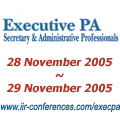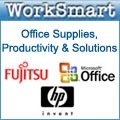
 Don't panic if you have been given the task of masterminding your company's office move because of expansion, relocation, or downsizing for more efficiency. It's not the headache you may at first think.
Don't panic if you have been given the task of masterminding your company's office move because of expansion, relocation, or downsizing for more efficiency. It's not the headache you may at first think.
Success relies on two elements – planning and control. Neglect either and your organisation could take weeks to recover from the upheaval and financially damaging time loss.
A cost efficient move needs to be carried out quickly and efficiently, so good removals crews and skilful management are essential. Select at least three removal firms to give detailed quotes for the project. Preferably, they should be members of a trade association such as the National Guild of Removers and Storers or the British Association of Removers.
Discuss with them their packing services, labelling systems, floor plans for your company's new and old premises and site access. The remover needs to establish whether lifts are available and whether special lifting equipment will be needed. If any items such as paintings, statues, chandeliers and ornaments require special packing introduce this into the discussion. And ask for quotations to include a crate hire period for seven days.
For peace of mind, hold a pre-budget exercise to help you understand the total expense of the move and examine the overall costs by asking for estimated prices from removers. On receiving these figures plan the package to meet your business needs and compare like with like in the tendering process.
"Quotes should include a cost breakdown that shows how much money will be spent on particular tasks," advised Colin McGregor when Head of Pickfords Business Moving. "For instance, a breakdown will allow a decision to be made on which tasks company personnel can do themselves, such as packing and unpacking."
Pick your moment
Now consider whether the move will take place during the day or overnight. If you can, it's preferable to choose a weekend when staff can leave work on a Friday and enter the new premises on a Monday.
Once a date has been arranged notify employees, customers, clients, shareholders and contacts. And don't forget insurance companies, banks, the Inland Revenue and service suppliers such as water, gas and electricity. Others to inform might include cleaning services contractors, vending companies, property, landscaping services, and maintenance suppliers.
Arrange an insurance policy that covers items to be moved and insure the building against any damage during the move. Removers can arrange this, if required. The premium is usually based on a small percentage of your company's valuation of items to be moved and there is generally a small excess payable if a claim is made.
Go label-crazy!
Now to the move. Ensure staff label everything that needs moving prior to the big day. Label all furniture – even the favourite plant container – with a colour-coded system that links their position at the new premises, and make a floor plan with colours corresponding to the labels.
Check with suppliers of computers, word processors, photocopiers and vending machines in case they are the only ones authorised to move them, and satisfy yourself that links are ready at the new premises to take PC networks, e-mail, and fax lines. Key to this is organising datacoms and structured cabling at the same time as planning desk positions and partitioning.
To avoid a log jam of crates during loading and unloading, decide what is needed last in the old premises and first at the new. A tip: contractors prefer to fill new premises from the top of the building first, down to the bottom.
Advise staff to take all personal property from the premises home prior to the move. Contents of desks and cupboards should be removed and crated. Drawers, filing cabinets, cupboards and bookcases should be locked and the keys handed to a designated person so that you know where they are.
Plan, plan, and plan again
From the start, decide whether you need a professional packer or whether office staff will pack. But bear in mind general duty guidelines in the Health and Safety at Work Act which includes advice on how to lift heavy objects.
Ensure identification of archive materials that can be packed in advance, that your remover will supply special crates for smaller items, that security roll-cages are supplied for confidential documents, personnel records, accountancy files, tapes, discs and computer equipment. Also that back-ups are made of all computer disks and arrange for them to be transported separately from the originals.
Finally, check that water, gas and electricity are connected to the new premises for moving day, that parking is available for the removal van, that skips will be in place at both sites for the final clear-up operation, that there is security clearance for the removal company and that you – or someone in delegated authority – has keys to the entrance and doors of the new premises, plus codes for the alarm system.
Easy, isn't it?
The National Guild of Removers and Storers
www.ngrs.org.uk
The British Association of Removers
www.bar.co.uk
Pickfords Removals Ltd
www.pickfords.co.uk







